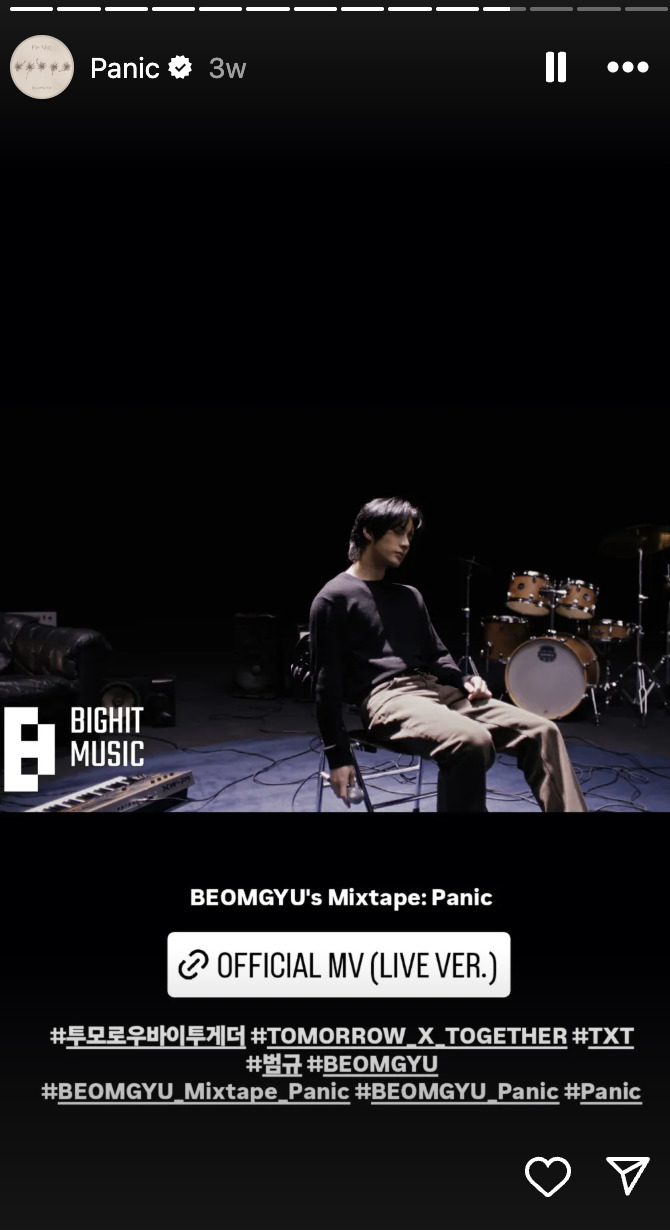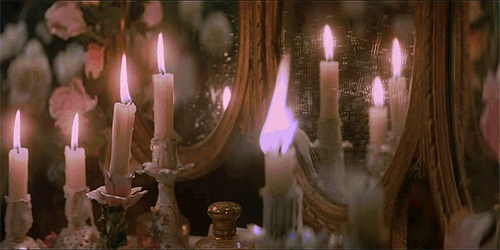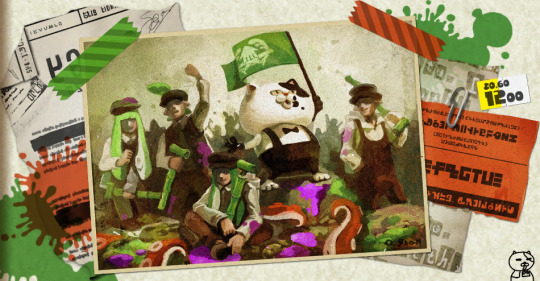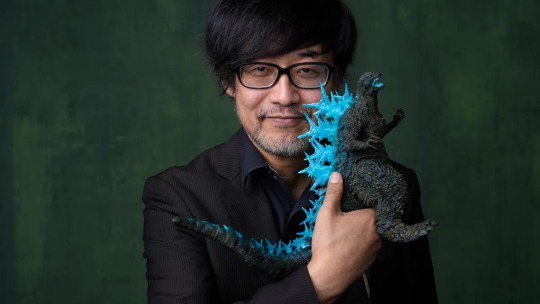#Creating a Mobile-First Strategy
Explore tagged Tumblr posts
Text
#Mobile-First Strategy Development#Mobile-First Digital Strategy#Mobile-First Approach 2024#Digital Landscape Mobile Strategy#Mobile-First Web Design#Mobile-First Marketing Strategy#Benefits of Mobile-First Design#Creating a Mobile-First Strategy#Mobile-First Website Development#Mobile Optimization for Digital Platforms
0 notes
Text
"Seven federal agencies are partnering to implement President Biden’s American Climate Corps, announcing this week they would work together to recruit 20,000 young Americans and fulfill the administration's vision for the new program.
The goals spelled out in the memorandum of understanding include comprehensively tackling climate change, creating partnerships throughout various levels of government and the private sector, building a diverse corps and serving all American communities.
The agencies—which included the departments of Commerce, Interior, Agriculture, Labor and Energy, as well the Environmental Protection Agency and AmeriCorps—also vowed to ensure a “range of compensation and benefits” that open the positions up to a wider array of individuals and to create pathways to “high-quality employment.”
Leaders from each of the seven agencies will form an executive committee for the Climate Corps, which Biden established in September, that will coordinate efforts with an accompanying working group. They will create the standards for ACC programs, set compensation guidelines and minimum terms of service, develop recruitment strategies, launch a centralized website and establish performance goals and objectives. The ACC groups will, beginning in January, hold listening sessions with potential applicants, labor unions, state and local governments, educational institutions and other stakeholders.
The working group will also review all federal statutes and hiring authorities to remove any barriers to onboarding for the corps and standardize the practices across all participating agencies. Benefits for corps members will include housing, transportation, health care, child care, educational credit, scholarships and student loan forgiveness, stipends and non-financial services.
As part of the goal of the ACC, agencies will develop the corps so they can transition to “high-quality, family-sustaining careers with mobility potential” in the federal or other sectors. AmeriCorps CEO Michael Smith said the initiative would prepare young people for “good-paying union jobs.”
Within three weeks of rolling out the ACC, EPA said more than 40,000 people—mostly in the 18-35 age range—expressed interest in joining the corps. The administration set an ambitious goal for getting the program underway, aiming to establish the corps’ first cohort in the summer of 2024.
The corps members will work in roles related to ecosystem restoration and conservation, reforestation, waterway protection, recycling, energy conservation, clean energy deployment, disaster preparedness and recovery, fire resilience, resilient recreation infrastructure, research and outreach. The administration will look to ensure 40% of the climate-related investments flow to disadvantaged communities as part of its Justice40 initiative.
EPA Administrator Michael Regan said the MOU would allow the ACC to “work across the federal family” to push public projects focused on environmental justice and clean energy.
“The Climate Corps represents a significant step forward in engaging and nurturing young leaders who are passionate about climate action, furthering our journey towards a sustainable and equitable future,” Regan said.
The ACC’s executive committee will hold its first meeting within the next 30 days. It will draw support from a new climate hub within AmeriCorps, as well as any staffing the agency heads designate."
-via Government Executive, December 20, 2023
-
This news comes with your regularly scheduled reminder that WE GOT THE AMERICAN CLIMATE CORPS ESTABLISHED LAST YEAR and basically no one know about/remembers it!!! Also if you want more info about the Climate Corps, inc. how to join, you can sign up to get updates here.
#climate corps#american climate corps#acc#biden#biden administration#americorps#epa#environmental protection agency#sustainability#conservation#climate action#climate change#climate crisis#climate emergency#environmentalism#global warming#united states#us politics#hopeposting#hope posting#national forest#public lands#disaster prevention#environment#ecosystem restoration#waterways#recycling#clean energy#reforestation#disaster preparedness
974 notes
·
View notes
Note
You said "(this is where KQ has really dropped the ball for all the members, imo, but we can get into that discussion later)" about the solo outings.
May I humbly request that it is later now and I would very much like to know what you think about the individual forays of Ateez?? Thank you!
@storkmuffin I will happily share my mostly-coherent thoughts about this topic, although I will caveat that this is my first kpop fandom and I really don't know enough about other groups to know if what I'm saying is specific to KQ or applies to other companies.
I'm happy for others to chime in!
My opinions are scaffolded by two broad impressions of KQ as a company: first, that KQ still does not quite know what to do with the unprecedented success and demand for Ateez; second, KQ has delegated much of the promotional responsibility for Ateez to atiny/the fandom.
These impressions have been formed by nearly a year on atiny twitter, where most of the major fanbases reside. I often remind myself that the primary demographic on atiny twitter is under-25, meaning many of their complaints and concerns are based on general ignorance about how business/music industries operate...but I also have so much admiration for how the fandom has mobilized over the years to achieve great things for Ateez: their multiple music show wins, invitations to major music festivals like Mawazine (the result of endless campaigning by the Moroccan fanbase) AND, most importantly, their tireless effort to get Ateez albums distributed in the United States. While Ateez had (and still has) a distribution deal with RCA, my understanding is that they have done very little to promote Ateez and the fanbases had to campaign for their albums to be distributed through Hello82 which gave them the opportunity to debut on the BB200.
The fandom mantra has always been: Ateez only has Atiny.
For many in the fandom, this mantra also applies to how KQ has promoted the members' various solo efforts in recent years. I have mixed feelings about this sentiment, and I'll do my best to articulate them here.
When it comes to the members' solo schedules, whether it be fashion show appearances, artist collaborations, or solo music projects, KQ does the bare minimum to promote these projects to their 10.5 million instagram followers, 4.3 million twitter followers, 4.4 million youtube subscribers, and 8 million tiktok subscribers.
Let's use as an example Sagittarius by Wooyoung, which Hongjoong produced for his Ateez Present series. An original song with original choreography, and a beautifully-produced performance video available only on youtube.
The KQ promotional cycle for this song: an announcement on twitter less than a week before the premiere (often less than 48 hours); our biggest fanbase releases a clip that can be shared on twitter (KQ only posts a link) and the official Ateez account posts an IG story with a link to the video, which Wooyoung reposted to his own stories. A day or so later, they release a logbook. After a few days, it's like the song never existed...except among atiny, who created hashtags, got those hashtags trending, made fun edits, and did their best to share the song with as many people as possible, pushing Wooyoung's IG account under every viral tweet.
To compare, I looked at another recent solo release by a member of a Big4 company: Beomgyu from TXT, who released his first single Panic a couple of weeks ago. This solo had a big promotional push: weeks in advance, HYBE rolled out concept photos, teaser clips, and an official hashtag campaign. You can easily access all this content in the highlighted stories tab on TXT's official IG page, which remains up to this day.

I may be ignorant, but this really doesn't seem like an impossible strategy for KQ to replicate, given the money they've already invested in producing these solo tracks. There was practically no promotion for San or Yunho's solo projects. Mingi really seemed to be in the room when they promoted Autobahn: that release got a lot more build-up and attention, perhaps because of its collaboration with Yumin.
One major complaint among atiny is that songs like Sagittarius or Autobahn are not available on streaming, and to be clear: none of the Ateez Present or Fix Off Project songs are available on spotify or apple music. Large parts of the fandom point to KQ as failing their artists by not making their solo projects available for streaming.
I share the somewhat contrarian opinion of those who argue that these solo projects are largely artistic ventures by the members, driven by their desire to make music for themselves to share with atiny. Making them available to stream transforms these songs into another metric, diluting their artistic value by replacing it with commercial value, and we cannot guarantee that those numbers will hold up to the hype of the fandom (streaming numbers are the no.1 metric used against Ateez in fanwars).
This is perhaps a naive opinion to hold, given that KQ is a company and making money is their primary goal. A more realistic explanation is that there are complicated logistics involved in putting a song on spotify, including artist royalties, licensing fees, and copyright. It may just be easier and mores straightforward to upload something to youtube....
But that still doesn't excuse the minimal promotion expended towards these projects. Frankly, it's short-sighted of KQ not to see that the more attention paid to these solo ventures enhances the overall Ateez brand.
And as a counterpoint, Jongho's recent cover got minimal promo, even though that song is available for streaming.
There's a separate and parallel argument to be made about the members' foray into the fashion world. For their recent appearances at Paris and Milan Fashion Weeks, the official Ateez accounts merely reposted reels and stories; the fandom once again came up with strategies to get hashtags trending and put together guidelines for how to generate EMV and MIV (we achieved great results for San at D&G and Wooyoung for Courreges). To KQ's credit, we did get excellent logbooks documenting Seonghwa and Mingi's fashion week journeys.
However, poor Yunho also had a fashion week appearance: Seoul Fashion Week...but he never got any promo, not even a logbook. It's like it never happened.
There's something to be said about how the small-company mentality of KQ has enabled the members to grow their individual brands in ways that feel organic and suited to their unique personalities: Seonghwa met Isabel Marant at a party in LA and now he's the face of their international campaign; Mingi landed the Calvin Klein gig and his recent Marie Claire photoshoot due to his own networking; Hongjoong met Odetari at a song camp, and they decided to collab (Hongjoong's collaboration with Odetari, which went viral for Hongjoong's lyrics allegedly dissing Bang PD, got next to no promotion by KQ. Odetari did a lot of the heavy lifting to promote that track and made cute animated mvs on his youtube channel and tiktok. It also bears noting that Hongjoong collaborated with a Palestinian American musician, while many Big4 companies are actively being boycotted by kpop fans for their associations and investments with Zionist companies). KQ appears not to dictate what their artists can and cannot do when it comes to their solo schedules, but also seem disinclined to make extraordinary (or industry-standard) efforts to support these ventures, except in rare cases.
There's still so much we don't know about their contracts and what will change when they inevitably renew those contracts. We also know that Ateez now works with an external PR firm for their European fashion schedules, which is perhaps why we saw SO MUCH attention during their recent fashion week appearances.
Yet their solo music promotion remains a mystery to me, and I'd love to hear from anyone who has more to say about this topic!
My final thought is that KQ's reliance on the fandom to do the promotional work will inevitably backfire. Our fandom is growing but with a lot of casual fans who have only ever known Ateez as a globally successful idol group, and not the underdogs whose remarkable achievements were (and still are) underpinned by the invisible labor of their dedicated fans and fanbases. Whenever a member's solo project fails to hit 1 million views within the first week, the fandom goes into blame-mode, tearing itself apart for our lack of support to the members, especially after everything they do for us. This isn't sustainable nor healthy. KQ needs to take on a lot more of the promotional burden now, especially since they have the means to do so.
We will see how that goes with the next comeback!
Thanks for the question, and thanks for letting me ramble.
106 notes
·
View notes
Note
intrigued by the concept of "harem manager", please tell me more!
Okay, so the idea comes about from looking at species that have harems in real life- specifically ones that have female mimics. The idea is that while an alpha male looks significantly different from females and will drive off other males from mating with them, a beta male looks much more similar to the females. They just kind of insert themselves into the harem and mate with the females (and sometimes the alpha males!) surreptitiously.
My thought was, as the species evolved and moved toward intelligence, it would be harder and harder for the beta males to actually trick the alpha males. As language and communication evolved, there would be a lot more social knowledge about who's in what group, and I just don't think it would be feasible for beta males to fly under the radar forever. Instead, these beta males would make themselves useful to the alpha to avoid getting kicked out.
In the way distant past, beta males would sort of appoint themselves as harem keepers. They would be the ones to make sure the ladies in the harem were taken care of, groomed, fed, and made comfortable. They would also sometimes act as spokesmen for their alpha, talking him up to entice other ladies into the harem. In return, they would be allowed to have children of their own, though typically less often than the alpha. This reproductive strategy ended up allowing alphas to have larger harems, maintain larger swathes of territory, and successfully raise more children, and allowed the beta males to live relatively protected lives with guaranteed children in the future.
In more modern society, beta males (known typically as gynomorphs) are appointed to larger harems as harem managers. Their role is pretty much the same as it was in the past- ensure the happiness and harmony of the harem. Sort out fights, ensure everyone is treated fairly, and make sure the ladies of the harem are kept comfortable. A harem manager often acts as something of a combo between a head servant (in wealthy families, it's his job to manage the servants who interact with the harem, in less wealthy families he might take on the role of a servant himself) and counselor. If any of the ladies in the harem have an issue, they're encouraged to go to him first, so see if he can sort it out.
The gender breakdown is about 60% female, 30% male, and 10% gynomorph, so not every harem has a manager. Gynomorphs as individuals tend to have a lot of individual social mobility (even someone born to a poor family will often live a generally good life, since wealthier people have larger harems and more often need a manager, so any halfway competent gynomorph will often get snapped up into one of these families) but they had no ability to socially move their families. In the specific society I've created, gynomorphs don't take on family names and just take the family name of whatever harem they manage, so they can't elevate family statuses.
Gynomorphs who don't have harems often struggle. They tend toward hospitality positions, since it's considered 'appropriate,' but most of those who take those positions tend to have harems and work on the side to make extra money for their families. The issue is that gynomorphs who don't have harems are seen as either incompetent (they screwed up their job bad enough to get fired, something that's hard to do unless you REALLY fucked up due to the relative rarity of gynomorphs) or deviant (they aren't in a harem so they don't want a harem position, which is typically seen as selfish at best or perverted at worst, if they're engaging in romantic relationships).
Whether or not gynomorphs and males of the same harem are related varies society by society. They often aren't, though it's not uncommon for cousins to be paired up as teenagers in wealthier families. Some societies consider it unusual but not worth remarking on if the gynomorph and male of a harem are siblings. Other societies consider it basically the same as incest.
I could talk more on the physical differences between gynomorphs and males, but I think this is long enough. People can ask if they want more details in that realm! Anyway, I'm just into the dynamics at play here. I think it's cool.
#monstrous howling#god this was too long and all over the place I'm SORRY#I had too many thoughts#Anyway I'm calling these guys 'multiscosis' which is just latin for 'many partners'#so if you don't want to hear any more about this blacklist#multiscosis
49 notes
·
View notes
Note
Why do the adult stages of insects have short lifespans?
Most animals can't reproduce, and most don't even develop the organ systems to do so, until almost the end of their development. Many mammals are actually rare freaks for their ability to start reproducing as little as a third into their lifespan, and keep reproducing over and over until they die; it's an extreme and radical survival strategy we evolved that comes with some pretty severe trade-offs, in that we have high energy demands and require so, so much food in proportion to most other organisms, not to mention all the ways those reproduction systems can take on illness, malfunction or hurt us. Other animals like birds and reptiles and various fish opted instead to reach adult size as fast as they can, build the reproductive system, and then just take it easy: they live a long time and can mate more than once, but they don't do so constantly and don't make that many young. The MOST common strategy in nature, basically the default norm is to devote most of your life just to eating, growing, and storing resources in your body, then "spend" all the resources you can on reproduction, giving so much of your energy to your babies that it actually kills you. The upside is that this is why most animals make hundreds or even thousands of young in one go, which better guarantees that at least one will survive. Salmon and octopuses are two of the most famous non-insects that do it that way, but so do thousands of other mollusks, fish, members of the various "worm" phyla and others. Many insect groups hyper-streamlined this, so they have a larval stage that's just an eating machine, like caterpillars and maggots, possessing only the bare minimum anatomy they need to keep on eating and growing and nothing else, usually incapable of even traveling from the same food source they were born on. They then use up all of this stored energy to create a body that is perfect for perpetuating their species, including more mobility (such as wings) to spread their population further. Insects exhibit almost every variation there is, but many insect groups hyper-streamlined the basic method so they have a larval stage devoted to non-stop eating, like a caterpillar or a maggot, devoid of any anatomy that does not help it collect all the energy it can as continuously as it can, then use up that energy to build an equally dedicated mating form, which may last only days or weeks because it even gave up the ability to eat as it devoted as much of its body as possible to making those babies in that one big go. There are still many exceptions including insects like cockroaches who mirror the mammal strategy of mating over and over for a relatively "long" adult life, or insects that still only mate the one time, but still at the end of a fairly long adult life that continues to eat and store energy. The most extreme exception to this might be aphids, which continuously develop clone offspring and give live birth to them for their entire life, by which I mean some aphids are born already pregnant with their first clone. These actually still go through a normal mating process too, though, when a winged male finds them near the end of the year, and then they die after laying proper eggs that can survive the winter. The non-stop clone babies are just so that one female has even higher odds of mating with at least one of those males, because now there's 10,000 of her for him to find. To understand basically everything in nature you just have to understand that: 1: life forms actually work like video game characters in that they constantly "farm experience" (nutrient energy) they have to spend on their unique spread of stats and abilities (every body part and system comprising them) 2: every life form evolves as if the only goal of that entire game is to generate offspring and increase the odds of their survival, literally no matter what must be sacrificed.
731 notes
·
View notes
Text
The best thing about watching Gundam Wing is actually picking out errors, plot holes, missed potential, and general confusing shit because the show actually makes it fun.
Like, the way the whole Sanc Kingdom arc was totally rushed and fucked over created so many problems later on in the show. And you can see how much great stuff they could have put in there.
Examples:
I like wondering how exactly Quatre and Dorothy identified each other during the battle in episode 44 when we've never actually seen them interact, let alone get to know each other well enough to recognize their abilities as pilots/battle tacticians. Like, how the fuck did Quatre guess that was Dorothy? Maybe I could forgive Dorothy identifying Quatre because maybe she witnessed him piloting a Taurus or Sandrock during the final Sanc battle, but there's nothing there for Quatre to draw his conclusion from. Was it even established to the audience, let alone Quatre, that she had skills as a pilot/mobile doll controller? Did they play XCom and Total War together when they were in the Sanc Kingdom? When did we ever witness a conversation between them? Never explained. They just knew exactly who the commander on the other side of the field was because... The Zero System, I guess?
Which Dorothy perfectly controls the very first time she uses it, despite it making every other pilot who tries it for the first time lose their shit. Quatre blew up multiple colonies while using the system for the first time and Heero literally couldn't use it without puking and hallucinating until he went through weeks of training. But Dorothy's a bad bitch, so she can use it to pilot who knows how many mobile dolls without a single issue
"Zechs and the Gundam Pilots are objectively the best pilots---" They demonstrably are not. For whatever reason, Dorothy Catalonia is. She masters the Zero System on her first try, which just so happens to involve piloting MULTIPLE MECHS. Heero can barely manage one on his third attempt.
This is the sort of shit that normally pisses me off in stories but I can't do it with Gundam Wing. Possibly because of nostalgia goggles. But I have way too much fun fleshing out the Sanc Kingdom arc in my head to get mad.
Just the idea of a proper setup for Quatre and Dorothy. The idea of Dorothy sneaking into the holding bay and experimenting with the Epyon's system when Heero isn't around. Her and Quatre playing a bunch of strategy games enough to start recognizing each others' techniques. It would have been SO GOOD AND MAYBE THEY WOULD HAVE DONE THAT IF NOT FOR PRODUCTION GETTING SO FUCKED UP!
Another example: Zech's whole "Milliardo Peacecraft: Goodwill Ambassador" arc that made no fucking sense. He drops the Sanc Kingdom in Relena's lap because his "hands are too stained with blood to lead the Peacecraft Monarchy." Okay, sure. But who gave him the authorization to act as a diplomat on behalf of Sanc after that? Did he clear it with Relena first? If so, when? Why didn't we get to see them reunite and discuss this?
We never actually seen Relena enter Sanc for the first time, or decide to create the institute, or even declare herself as the Sanc Head of State officially. Sanc was still more or less in ruins when Zechs returned and then the next we see of it, Relena's sitting pretty in the castle and the whole city is rebuilt and there's even a special pacifism school for princesses. When did all that shit actually happen? How did Relena manage to do all that shit in a handful of months? With what resources? Was there some Peacecraft Swiss Bank account that Zech passed onto her? Was it the Darlian money? How did she convince so many world leaders to send their daughters over? Why only the girls?
If Sanc was such a problem, why did Romefeller allow the monarchy to re-establish itself in the first place? Why did it take them so long to invade?
When they see each other on the Libra and Zechs hugs her, she says, "I don't know if I'm standing in the arms of Milliardo, the kind brother I once knew, or the bloodstained hands of Zechs Marquise." And it's like... Wait, Relena, when did you ever actually have an extensive interaction with your brother that you can actually remember? You were a baby when Sanc was destroyed (or a toddler maybe? There's a picture of her in the castle where she's like 3, but everything else suggests she was an infant when it happened) and you had no memory whatsoever of being a Peacecraft. Even if we include Year Zero, the most interaction we've seen you have with your brother amounts to handful of sentences, and half of them were when he was trying to murder your sempai in an antarctic dick measuring contest.
I would have LOVED an episode where Noin brings Relena to Sanc at last, and Relena and Milliardo have this extensive, tearful reunion. Where he explains to her why he can't in good conscience assume leadership and has to abdicate to her and handing over resources to get her started. Her asking him to at least serve in some diplomatic capacity as she's getting started and assigning him the task of investigating and circumventing Oz's growing influence in the colonies.
It wouldn't have been perfect but it would have made a number of things clearer and cushioned some of the issues with Zech's character arc. It also would have helped explain exactly why and how the Sanc Kingdom was so problematic to Romefeller. Like, yes, a bunch of countries were apparently joining Relena's pacifist alliance, but how did that manifest aside from a few towns refusing to conscript and getting blown up for their troubles? Romefeller and OZ took over via military coup. What was it that Relena and her allies were actually doing that was such a threat? Were they withholding vital resources? Destroying weapons? Fracturing the foundation itself beyond what the Treize faction had done?
Okay, so multiple countries were going "actually, we don't want to go to war." But OZ had already taken down the alliance and was expanding it's influence in outer space through Une's diplomatic offensive anyway. Any and all impediments to their mobile doll production had nothing to do with what Relena and Sanc were doing.
I can come up with reasons why things played out as they did, and I love doing it.
Better establishing Zech's peace ambassador arc and showing us Relena actually re-establishing the kingdom would have gone a long way.
Instead we got two clip shows in a show that was trying to cram multiple wars and complicated politics and philosophy into only 49 23-minute episodes of television.
Sorry y'all the anniversary got me addicted to watching this show again and I'm having a manic phase.
#gundam wing#dorothy catalonia#quatre revarba winner#Zechs Marquise#Relena Peacecraft#Milliardo Peacecraft#Relena Darlian#uh oh Wendy is manic and thinking too hard about stupid nerd shit again#i should probably fic about this but Im still trying to update my current WIP
17 notes
·
View notes
Text

SKHR — "SCHNEE EULE" —
Strategische Kampftaktiker Hilfe Replika
(Strategies Combat-Tactician Help Replika — "Snow Owl")



Type: Generation 5 Combat Tactician
Frame: Biomechanical Frame ,Polyethylene , Bullet-Resistant Armor Plating
They're the same as the common EULR unit but slightly heavier due to their equipment upgrade

Model Development:
SKHR (Strategische-Kampftaktiker Hilfe Replika), (Strategic Combat-Tactician Assistance Replika 'Snowy Owl') or Schnee-Eule, are Generation 5 specialized units developed by the Eusan Nation. These units were built based on the common Eule, enhancing their capabilities for battlefield deployment and combat support. SKHR being deployed at Rotfront specifically
The SKHR "Schneeeule" Replika was developed as a specialized response to the shortcomings of earlier EULR units in high-conflict zones. While EULRs excelled at domestic and logistical tasks, they were ill-suited for combat or tactical operations. To fill this gap, the SKHR model was created, combining the light, agile frame of an EULR with upgraded combat and tactical support capabilities.
Its neural pattern was derived from a Rotfront gestalt known for sharp analytical skills, leadership capabilities, and a deep sense of loyalty. However, its origins also carry emotional vulnerabilities, as the neural donor experienced trauma related to abandonment and survivor’s guilt, which heavily influences the unit’s Persona. The SKHR is equipped to function as both a frontline combat unit and a support specialist, assisting in battlefield triage, supply coordination, and tactical planning.
SKHR units tend to exhibit quiet, contemplative behavior when not engaged in tasks. They often exhibit subtle nesting tendencies, organizing their quarters in meticulous ways that reflect their desire for control and order in the middle of chaos.

Combat Attributes
SKHR units occupy a unique position in the command chain, bridging the gap between strategic planning and frontline combat. Deployed as field tacticians, they operate under the direct supervision of senior officers but are granted considerable autonomy during missions.
Battlefield coordinator, ensuring troop efficiency and survival. Support unit for wounded soldiers and logistical supply management.
Exceptional analytical skills for quick tactical decision-making. Adept at both mid-range combat and first aid procedures.
Although not as heavily armored as other common frontline combat models, making them vulnerable to sustained fire along with their emotional tendencies can sometimes impair their objectivity in high-stress situations. A common strategy is pairing them closely with a younger STAR or STCR unit
Equipment
Schnee-Eule units are optimized for the rigors of the battlefield, equipped with Biomechanical Frame ,Polyethylene Shell, Bullet-Resistant Armor Plating and Sophisticated-Sensor Arrays to navigate and engage in dynamic environments.
Beak Mask that is fixed to the frame, deploys automatically in combat mode to enhance targeting, filter toxins, and provide night vision.
Repair Spray, Autoinjector and multiple Repair Patch Stored in thigh pouches



Submachine Gun Lightweight weapon suited to the unit’s mobility and mid-range combat role.

Known Issues
「Replika Known Issues」
CLASSIFIED INFORMATION - Commander Eyes Only
Previous experience with these Replika models has given us insight into irregularities in their behavior that stem from the original neural patterns used for these units. Due to the sensitive nature of this information, this document should be destroyed after reading.
SKHR units may form strong attachments to specific personnel or units, which can lead to emotional instability if those individuals are lost in combat.
Their neural pattern predisposes them to survivor’s guilt, especially if they perceive themselves as failing to protect others.If left in prolonged isolation or repeatedly exposed to high-casualty scenarios, SKHR units may experience accelerated Persona degradation, resulting in erratic or self-sacrificing behavior.
32 notes
·
View notes
Text
executive function strategies / focus-enhancing techniques
pls feel free to reblog or comment ur own!
Pomodoro Method 🍅
25 minute interval of focusing + 5 minute break x2
followed by a 25 minute interval of focusing + 15 minute break
repeat!
you only have to focus for a set amount of time!
& it gamifies your work
I use Pomofocus but there are other sites and apps as well !
Note: You can lower these time intervals to something more accessible at first! If 2 or 5 minutes feels more achievable, start there.

Body Doubling 💑
I usually get a friend who also needs to work on call
This can also be in the form of having a study with me stream on, working in a café, or being around someone in person.
The accountability and parallel play is very effective for me, even if we are not actively collaborating or speaking!

Break Down Tasks 🔨
This is very important to neurodivergent folks.
I think about it like a computer program. When you explicitly list each step of a process, in its simplest steps, it does a significant amount of work for your brain before you've even started.
So make a list of steps for your individual tasks, breaking them down.

Rituals 🕯️
This can be whatever you want it to be!
Light candles, play a specific order of songs, chewing gum.
Doing these before each work session can make connections in your brain that improves focus and memory.

Note: This is a great gateway to Habit Stacking as well. This is a method outlined in Atomic Habits in which you link new habits to existing ones. For example, after making a cup of coffee, as you already may do every morning, you sit down to plan or review tasks.

Productive Procrastinating 🫣
This is admittedly not always a good idea...but it works!
Basically, it's having a list of things I need to do, and choosing to do something less urgent instead of the biggest or most important project first.
This can help relieve some of the pressure in starting a work sesh and create momentum!
For example, instead of immediately starting that 5 page essay due tonight...I might exercise or clean for 10 minutes first.
May or may not be what I'm doing right now.

#please add more im running these into the ground#productivity#100 days of productivity#studyblr#gilmore girls#pomodoro method#body doubling#adhd#autism#neurodivergent#executive dysfunction#focus#troy and abed#gamification
29 notes
·
View notes
Text
Okay, so since I sank into "Made in Abyss again" (emotional distress crying from Iumiyui's fate is great is a great method to come down emotionally from exam prep - totally safe, 10/10 ideal coping strategy), and nodding frevorously along this masterpiece of a post, I've some unsorted thoughts:
The only marginal difference between the Ganja group and Orth's cave raiding economy is how Orth made the suicide mission profitable. Where the Ganja group followed a religiously aligned settlement promise, Orth is a fully structured arms-race-profit-mining-system. From all we can gather, the indigenous culture we encountered along with the Ganja group had to deal with aggressive exploration groups before the Ganja group, and has vanished by the time we follow Riko's story. It has been replaced with the customs of Orth. While the Abyss, it's relics, corpses in praying position ranging in millennia of ages, the story behind them is one of the fascination drives, all findings are treated less as object of scientific discovery but generating financial profit by getting sold. The Abyss has turned from promised land of glory and home, to promised land to be exploited for profit for outside forces.
Orth and the cave raiding explorations are just an extension of arms dealing race around which Orth created an entire culture of celebrating endangerment, piles of missing or dead bodies, and indoctrinating children into not wanting to know anything but the world but exploring the Abyss. The larger narration tells us that the Abyss is just a small island of a bigger world. Yet the Abyss itself becomes the subject of bottomless fascination for all Orth orphans who aren't taught about anything about the world beyond the Abyss, or cultured outside the town of Orth.
And the cave raiding culture needs orphans. No parents will miss them. A lot of illegal cave raidings are going on too, meaning there're countless children left behind by people who aren't even registered as inhabitants of Orth. It needs children who earn their shelter and food by excavating relics of the first layer for financial profit. It needs children like Nat who became an orphan, lost his older sister, who can't imagine earning his income and future to help other orphans in any other way but becoming a Moon/Purple whistle. Nat will by necessity try to become a Moon Whistle because he can't gain neither money nor authority in any other way. Except for arguably Mio the audience yet has to encounter an adult who's respected without cave riding qualifications.
The only upwards mobility is going downwards with a high risk of one's own life.
It's a social structure rewarding financial and capital gain above anything and is in constant struggle to maintain humanity within an enviroment so hostile to human life. Jirou, despite having been her apprentice, doesn't have a good testimony of Lyza's character and behavior. Ozen can only value people in physical strength but otherwise has the maturity and possessiveness of a silking child, Srajo's Hail Hex is basically an amalgamation of people who Srajo can utilize for their powers because were else can they go? Well, Bondrewd is the embodiment of "unethical science" and peak child abuse perpetrator mentality - and also a convicted criminal before he came to Orth. Anywhere else the Whiste Whistles would be terribly misadapted interacting with other people. But in the Abyss? The Abyss is a place so hostile to human life, the majority of successful cave riders have to give up some part of their humanity to delve and resurface. But given how financially valuable they're retrieving relics like the Silent Bell, any collectable trinkets which are sold way above their value to the outside, these people are rewarded with status and a blank check for anything they do. What makes them successful cave raiders lies in their self-interest, amalgamation of different forms of power, and self interest, gets rewarded. As long as they create profit, the authorities don't mind. By all means, the Umbra Hands choose to be part of Bondrewed's illegal human experimentation crew voluntarily, and even if they are untouched by the Zoaholic-influence when moving around others layers like Remayo or Gallice, they choose orders by their own volition. The priestress' squad, and the other White Whistles might not like, and even have the force to go against Bondrewed (especially Ozen and the Hail Hex) but they don't. If three kids can figure out how Bondrewed remains alive within a night, trained adult cave raiders should do with low effort. Still Bondrewd is accepted as necessary evil, friction only appears when interests collide.
Iruburu's economy recalls the surface issue so well because it point blank turns the individual into a monetized object. That's exactly what happens in the layers above, and on the surface. The cave raiding system needs children to blindly perpetuate the Orth practice. Their desires are sometimes so simple their wishes manifest more clearly, and more direct than adult wishes. Hence why Bondrewed chooses orphans for his experiments. Partly because none else cares for them, partly because he can manipulate them into adoring his so they will take upon the 6th layer's curse for him. Since he uses orphans, Bondrewed can use their desire for belonging and love easily because it's so single-minded and so straight-forward.
Children are highly valuable in the Abyss due to them being easily manipulated for the gain of others. Either in perpetuating Orth's economy business, or for channeling the Abyss' forces through children.
The desires of children might be more single-minded but the story showcases really well, how desire in the first place is created in lacking by dehumanizing them. The orphans in Orth have to provide child labour without profiting, no matter how good the excavations findings are. They desire exploration, satisfying their curiosity because they're denied the security of home and care as granted certainty. The fact that Wakyuzan used two cradles of desire on Irumiyui was not only out of him wanting to accelerate Irumiyu's transformation but because Irumiyui's desire was already not as simple as "a child's desire is not as corrupted". In fact Irumiyu's desire is corrupted by the logic that she as a girl only has a future and value in her community if she submits to reproduction ceaselessly. (As Irumiyui stated, her birth mother is highly valued because she bore many children.) By her infertility, Irumiyui becomes devalued as a person, her security, community, shelter, and love are taken away from her. So the logic is become mother, then you'll have a home. Meaning, at the risk of loosing her home once more, the creeping death of the Ganja group, the indoctrinated formula was to become a mother first, and only the second Cradle of Desire turned her into a home, and most likely because she wanted to keep Vueko close to her. Where motherhood between Vueko and Irumiyui was an experience of care and unconditional love - the first time they both experienced such a connection with anyone else - the moment that feeling was turned into a need churning out a desperate desire, the joys of motherhood become grotesque exploitation. Irumiyui's children look so grotqesque, more akin to a hermit rat than an actual living creature because Irumiyui's understanding of reproduction is so infantile, more tied to her desire to matter and being loved, than actually desiring being a mother, less so really desiring to have children. (In that sense Vueko's grief over the daughter she lost to the scheming of others parallels Lyza still-birthing Riko due to the stress of retrieving the Silent Bell. Authority and financial greed costing Lyza's husband and child.) Either for colonial or capitalist-mining desire, very human needs get corrupted within the Abyss, especially by those with selfish gain. Vueko's and Irumiyui's connection is highlighting the issue how actually they should've never entered the Abyss because what they searched for, a home, care love, being valued by another person, does not lay in abstract promises but in actual people with them. Same goes for Mitty and Nanachi who were promised the wonder of the Abyss but actually long for experiencing life together. In the Abyss, greed easily deforms genuine connection.
Bondrwed's test subjects are orphaned children with no future so they easily respond to patience, shelter, food, and kindness. Here in lies a simple yet perfidious strategy in Bondrwed's abuse: Create a need first so that desire needs to be born. On the other hand, isn't he acting in any way different than Orth?
Riko does present an interesting case as a child White Whistle because she enters the Abyss also with a not so simple desire for belonging. No matter how dangerous, scary, and horrific the Abyss is, Riko will mostly feel at home that never ceases to amaze her. Already in her introduction her eager search for rare relics is motivated by trying to climb ranks down up as quick as possible, not because she intends financial gain. (Her logic goes from a) man that's rare and worth a lot so b) these high profits qualify me as a red whistle because c) I want to explore more). Her simple fascination isn't actually that simple because naivety in cave raiding stems from the propaganda taught to the orphans how glorious it is to die during a cave raid. Again, social capital in Orth is sourced from deep raids, so Riko's desire to be told she can take a rest, her curiosity and knowledge of the Abyss met with praise not punishment, her being admired, and not belittled takes the shape of being a successful cave raider (her hallucination in the 3rd layer). Her fascination with the White Whistles is linked to her curiosity but it's also connected with her fascination for Lyza, in imagining a connection to the mother she barely knew. (Like, the imagined scene of Lyza leaving behind the Unheard Bell for her child creates a Madonna like image in Riko's imagination whereas in Ozen's memory of Riko's stillbirth Lyza is deeply depressed, surrounded by bleak light, then crying non stop while pushing the Curse-Warding Box to the surface, leaving Torka's corpse behind. The imagined desire is much more romantic than the actual reality.) Through Ozen's psychological torment in sniding how Riko is just predestined to return to the Abyss without any will of her own, the horror of meeting but quickly, violently loosing Prushka, hearing from Vueko how high the cost of getting one's desire granted within the Abyss is, everything that shaped Riko's desire before, the cult around the White Whitles, realizing how dangerous the Abyss actually i - all that that gets dismantled, and what's left is Riko's honest desire to explore as fascinating, unexplored world. In fact, Riko matures by leaving behind all the initially indoctrinated impulses to explore the Abyss without Riko loosing any of her optimism and kindness. Like, Seeking help from Nanachi, making the cave raid a group effort rather than her personal accomplishment for her receiving glory and admiration, becoming more careful because Riko realizes that Reg has physical as well as emotional limits, not trusting White Whistles, applying her knowledge of the Abyss more to the reality of danger. In fact, Riko becomes more caring, her exploration group more fortified against potential danger because Riko becomes more prudent, attentive, and caring.
With Riko's rosy vision clearing during her journey, stripping bare her actual desire, Riko seeking out the Abyss is almost morbid yet fundamentally different than other White Whistles: Whereas Bondrewd is an absolute egoist he fashioned his White Whistle out of himself, no ethical stake too high for satisfying his curiosity and need for power, Ozen understanding a person's worth only in their physical prowess. The Abyss becomes their playground for their own self-affirmation. Where the majority Ganja squad might have genuinely desired a fresh start from their old demons, the Abyss should fulfill their dreams for new life whereas Wakyuzan still manipulated people even in the most dire situation to make his prophecies becomes true instead of a failed mission.
But Riko wishes less and less things for herself but for others. In fact, it might be Lyza's most redeeming quality that she likely wished for Riko living outside a destiny at the bottom of the Abyss. Still, Riko and Reg might be the only people returning "home". And along the way, Riko takes people along with her not by promising riches but an experience of community and exploration. It might sound to romanticizing although Riko's rather.... "beholding" the Abyss, not seeing it as treasure trove for glory, fame, and profit anymore. Her carrying Prushka with her is her tribute to a friend who was as fascinated with the wonders of the Abyss as her, not because Riko ever wanted a White Whistle after she learned the inhuman price for them. After the destruction of Iruburu Faputa is free of her destiny, free to enjoy company and friendship. Riko rather becomes a carrier of wishes, desiring less so herself. (Hence why Wakyuzan speculates on utilizing Riko as second Iruburu carrier.)
Last but not least Riko's relation to Reg develops in curious ways because Reg turns from object that could easily blast away Riko's obstacles more to a friend. Reg most likely was build to be the ultimate utility tool for the Abyss. Still, even upon meeting Faputa it becomes clear that is personality is rather shy, friendly, and cautious. A lot of things others ask him to do, fighting that is more than often, it goes against his actual personality. Not only Ozen beating him down, Nanachi needs him to mercy-kill Mitty, Faputa wants him to either destroy with her or at least step aside for Iruburu's destruction, or Reg has to fight against Faputa while his prowess sinks with every layer.
Riko begins with curiosity getting the better of her and other people's boundaries (and Tsukushi working in his questionable proclivities...), she does like Reg but often pushes him around to do stuff, or is much more deliberate in him figuring out the fighting. (Hence why she takes on her own adventure against his warnings in the 3rd layer.) Only gradually getting worries about his well-being, becoming actually aware of her mortality after almost loosing her arm, does Riko take more care of Reg's feelings as well, rather runs, waits, and hide than challenging which would primarily endanger Reg. Meaning, her relationship with Reg showcases how Riko unlearns utilizing people for her cave raiding gains. Nanachi's story already opens her eyes to the reality behind the legends of the White Whistles. Upon Bondrwed's experimentation of Reg, and then Prushka getting discarded as yet another cartridge in spite of Prushka's sincere love for her father, does Riko realize how cave raiding itself, rather than the Abyss itself, dehumanizes people. Owning a White Whistle seemed so aspirational, but now it's a price Riko wouldn't have liked to pay at all. She would've rather counted on Bondrewd's help for entering the 6th layer than sacrificing anyone.
In that sense, meeting White Whistle Srajo will become an interesting chapter on the issue how people become tools within the Abyss, how to balance cooporation and exploitation. Srajo's Hail Hex consists of Juuso's whom Srajo uses as well as robust, organized cave raiding team as well as weapons when needed. The thing is... Juuso's either get killed, shunned, or they're somewhat safe in groups like with Srajo's where they need to be useful to go on cave rides.
If the effect and call upon Juuso's is indistinguishable from using Reg as 1st grade relic... where is the line in denying a person their dignity beyond their exploitable skillset?
And so the macro seeps into the micro in which every person becomes an interchangeable but useful cog in a system that's just designed to churn out profit.
#Made in Abyss#Lewis rambling#cw reproductive rights issue#gosh Made in Abyss is a full shopping list of trigger warnings summarized by a three word title
15 notes
·
View notes
Note
Since the musical classic Shellendorf has now been out for about a decade, I have a request for a weapon spotlight: The Bamboozeler! I’d love to learn about the history of it and its strategies.
Ask and you shall receive!
Weapon Spotlight: Bamboozler 14 Mk I and Bamboozler 14 Mk II


That's right: for the anniversary of Shellendorf: the Musical, we're covering two kits in one! The Bamboozler is a unique and versatile charger weapon with a design that's held up for over 100 years! The model we sell today remains as faithful to what you'd see back in the days of the Great Turf War as possible while still remaining within the Turf War Association's guidelines.

About a year into the Great Turf War, the Octarian army secured much of Inkadia's resources to build their Great Octoweapons, an impressive series of technological advancements whose details I'll save for another post ;), leaving Inklings practically defenseless. Desperate to secure a victory, the Inkadian government drafted countless Inklings, but there weren't enough materials to properly arm them. Back then, sardinium was the main component of Inkling weaponry and artillery, and at that point, the Octarians controlled all the Sardinium mines.
That is until none other than my grandpappy, Ammoses Shellendorf (pictured on the far left in the photo above), came up with the idea to use Inkadia's wide stretches of bamboo forests to the squids' advantage, and he designed a rudimentary, but flexible weapon that any sea creature could easily make with just a little bamboo!

With Grandpappy's ingenuity, Cap'n Craig Cuttlefish's leadership, and a stroke of luck, the Squidbeak Splatoon and the rest of the Inkling militia was able to outnumber and out-tentacle the Octarian army, claiming Inkadia for the Inklings and their allies! Shellendorf goes into more detail about the events leading up to the invention of the Bamboozler, all backed up by Grandpappy's notes from the war (though the dance numbers are a creative liberty, I'll admit!)
And did you know that the Bamboozler, in addition to being the weapon that saved the Squidbeak Splatoon, was the first and most popular weapon that Ammoses sold when he first founded Ammo Knights? The squids of early Inkopolis were greatly inspired by Cap'n Cuttlefish's heroics on the battlefield, so naturally, the weapon he and the rest of the Squidbeak Splatoon used were the coolest thing on the market.
Nowadays, the Bamboozler remains a mainstay in the Ammo Knights lineup, and for good reason, too! There's no charger quite like it (except for maybe the Classic Squiffer, but we'll save that for another spotlight post) as its comparitively weaker damage output and inability to store charges or pierce opponents is made up for with an incredible charge rate, mobility, and paint output for a charger. It's not the easiest weapon to pick up in modern day Turf War games, but those who can master it can dominate a match as the weapon lends well to creating devastating combos with its consistent range no matter how long you spend charging it (which is almost no time at all!) Whether you're on the offensive, sneaking and sniping, or supporting your team, the Bamboozler can handle any situation!
Like I said at the beginning of the post, we'll be going over two Bamboozler kits: the 14 Mk I and the 14 Mk II. The Mk I comes with Autobombs and Killer Wail 5.1. The Autobomb is a sub weapon that focuses on displacement: if your opponent can't outrun it, they get splatted or take enough damage for you to splat with your main weapon, and even if they do, you can easily chase them out of hiding! And with the Killer Wail 5.1, you can amass even more chip damage and combo potential and chase opponents away from the objective!
The Mk II, meanwhile, comes with a kit that focuses more on ink coverage with Fizzy Bombs and Super Chumps. With a Fizzy Bomb, you can create a reliable ink trail for movement, and if you take the time to shake it before throwing, you can cause a chain of explosions that can easily catch opponents off guard! You have the lethality and chip damage the Autobomb provides, but even more so. And the Super Chumps special is also pretty handy as it makes many bursts of ink and covers a lot of turf, and anyone caught in the explosions will find themselves vulnerable to—you guessed it—a combo with the Bamboozler!
It takes a good bit of skill to bring out the Bamboozler's full potential, but when you do, you can turn a match into a warzone and show your opponents exactly why this weapon has survived the test of time!
Pro tip: Just about any combination of shots from a Bamboozler can splat an opponent, whether it be two partial shots, a fully charged shot and a tap shot, a charged shot and a sub weapon's splash damage, or one of your shots with one of someone else's. Use whatever opportunity works best in the current fight!
Feel free to suggest more weapon kits for us to showcase!
#weapon spotlight#sheldon says#ammo knights official#great turf war#ammoses shellendorf#capn cuttlefish#bamboozler 14 mk I#bamboozler 14 mk II#shellendorf musical#sheldon splatoon#sheldon shellendorf#splatoon#splatoon 3#splatoon irl#splatoon rp#unreality
13 notes
·
View notes
Text
A (not so) short guide for FTH bidding
Bidding can be a bit confusing, especially this year with so many great artists who are willing to offer their time and talents. This guide will hopefully assist to build strategies on how to choose artists, what to expect and how to handle things after you win.
The most important thing to remember is that FTH is a charity event. The creators don’t receive any of the money that is being donated, and get nothing but satisfaction. It also means that unlike a regular transaction, the bidder is not “buying” the artist’s time. Creators are participating out of the kindness of their hearts, and should be treated with even more respect for their time and boundaries than usual.
Another important thing to remember is your budget limit. It is easy to get swept up by the heat of the moment and raise your bid offer, but at the end of the day, if you win, you are expected to honour your offer. It is strongly advised to decide, before you start placing your bids, how much money you want to spend (advice on how to keep track of the sum will be detailed later).
Another thing to consider before you start bidding is your goals. Is there one writer's offer you will pay any price to win the bidding on, or are you going to bid for all the writers and be glad with whoever you will win? Maybe all you want is a podcast or a beta? Do you have a specific idea that only one artist will do justice?
Browsing can seem confusing at first, but there is logic in the madness. Read the Sticky post, the tips are useful!
On the desktop computer you will see on the left a list of all the fandoms and the main tags. From mobile, you will see only the list of creators, so it is advised to use the tips in the sticky note to narrow down the list.
When deciding whether to bid for an artist you are not familiar with, there are some important things that can help with the decision. First, check their previous works - do you like their style? Each artist is different and creates something else, that’s part of the beauty of fandoms. Focus on the artists that appeal to you, and don’t expect artists to change their style. Second, take a good look at their offers - what are they interested in? Some artists will focus on certain characters, while others prefer specific genres. Does the rating match the prompt you had in mind?
If you have an idea that is similar to one of the topics that the author marked as “unwilling to address”, or a specific kink, contact them before you bid (each creator provided a way of contact).
When you find a creator that interests you, check all their offers. Some artists offer different things (rating, special interest and type of fanwork), so make sure you bid for the right one.
Most creators focus their skills for a specific fandom, while some offer works to all fandoms, so it is advisable to browse the “all fandoms” tag as well.
While browsing, make yourself a list of all the artists you wish to bid for. It can be in any format you want, but make sure to include the author’s handle, what they offer, their link and the status of your offer. That way you keep easy track of the amount of money you offer as a donation, and decide if you reached your limit or you can bid higher.
Golden needle auction - shortly before the bidding ends, the FTH mods promote creators that had yet to get offers. Keep your eyes open, you might find an artist you accidentally missed, or even discover a new artist or a fandom you hadn’t thought of before. Sometimes this can prove a chance to discover a great creator you weren’t familiar with.
During the bidding - some people chose to bid as early as the bidding starts and wait for the results, without engaging in bidding wars. Others like to keep track of their offers, and update them if needed. Whichever strategy works best for you, remember to keep an eye on your budget and not offer more than you can afford yourself.
After the bidding - Congratulations! You’ve won an auction (or auctions). What’s next? First, get some rest. The process can be exhausting, so take a moment to relax and celebrate your wins. Also, allow the mods a few days to contact all the winners.
You will receive an email with the details of your wins, and will be asked to donate to one of the charities your creators listed on their page. Please donate and answer the email with the receipt as soon as possible, and don’t wait for the last minute - both the mods and the creator will appreciate it.
Contacting your author - after mods have received proof you donate, you will receive the creator's details. Please remember that the money you paid was for charity, and none of the creators are being paid for it. It was a stressful process also for the creators, so don’t panic if they don’t answer immediately.
Deciding on the gift - some creators like to be given a vague idea and a wild hand, while others prefer an elaborate idea and back and forth with the bidder. Whichever way you choose, make sure the creator is comfortable with the theme, rating, genre and kinks, and respect their boundaries. Remember, if the creator is happy with the prompt they are given they are likely to get more inspired for the work so it’s always better to make sure the idea is something the creator is fully comfortable with.
Thank you for participating in the event, and may the odds will always be in your favour!
39 notes
·
View notes
Text
If you want to see what the GOP has in store for the rest of America, visit the Old South
Thom Hartmann
June 27, 2024 5:42AM ET

Photo by Miltiadis Fragkidis on Unsplash
Today is the first Biden-Trump debate and many Americans are wondering how each will articulate their ideas for the future of America.
Republicans have a very specific economic vision for the future of our country, although they rarely talk about it in plain language: they want to make the rest of America look and function just like Mississippi. Including the racism: that’s a feature, not a bug.
It’s called the “Southern Economic Development Model” (SEDM) and has been at the core of GOP economic strategy ever since the days of Ronald Reagan. While they don’t use those words to describe their plan, and neither did the authors of Project 2025, this model is foundational to conservative economic theory and has been since the days of slavery.
The SEDM explicitly works to:
— Maintain a permanent economic underclass of people living on the edge of poverty, — Rigidify racial and gender barriers to class mobility to lock in women and people of color, — Provide a low-cost labor force to employers,
— Prevent unions or any other advocates for workers’ rights to function, — Shift the tax burden to the working poor and what’s left of the middle class while keeping taxes on the morbidly rich extremely low, — Protect the privileges, power, and wealth of the (mostly white and male) economic overclass, — Ghettoize public education and raise the cost of college to make social and economic mobility difficult, — Empower and subsidize churches to take over public welfare functions like food, housing, and care for indigent people, — Allow corporations to increase profits by dumping their waste products into the air and water, — Subsidize those industries that financially support the political power structure, and, — Heavily use actual slave labor.
For hardcore policy wonks, the Economic Policy Institute(EPI) did a deep dive into the SEDM last month: here’s how it works in summary.
Republicans claim that by offering low-cost non-union labor and little to no regulatory oversight to massive corporations, they’re able to “attract business to the region.” This, they promise, will cause (paraphrasing President Kennedy out of context) “a rising tide that lifts all boats.”
Somehow, though, the only people who own boats that rise are those of the business owners and senior executives. The permanent economic underclass is key to maintaining this system with its roots in the old plantation system; that’s why Mississippi, Louisiana, Alabama, Tennessee, and South Carolina have no minimum wage, Georgia’s is $5.15/hour, and most other GOP states use the federal minimum wage of $7.25/hour and $2.13/hour for tipped workers.
It’s thus no coincidence that ten out of the 20 Republican-run states that only use the federal minimum wage are in the Old South.
Anti-union or “right to work for less” efforts and laws are another key to the SEDM; the failed unionization effort last month at the Alabama Mercedes factory was a key victory for the GOP. Unions, after all, balance the power relationship between management and workers; promote higher wages and benefits; support workplace and product safety regulations; advance racial and gender equality; boost social mobility; and have historically been the most effective force for creating a healthy middle class.
Unionization, however, is antithetical to creating and maintaining a permanent economic underclass, which is why, as EPI notes, “while union coverage rates stand at 11.2% nationally, rates in 2023 were as low as 3.0% in South Carolina, 3.3% in North Carolina, 5.2% in Louisiana, and 5.4% in Texas and Georgia.”
Unions also make wage theft more difficult, essentially forcing government to defend workers who’ve been ripped off by their employers. That’s why Florida doesn’t even have a Department of Labor (it was dismantled by Republican Governor Jeb Bush in 2002), and the DOLs in Alabama, Delaware, Georgia, Louisiana, Mississippi, and South Carolina no longer bother to enforce wage theft laws or recover stolen money for workers.
Another key to the SEDM is to end regulation of corporate “externalities,” a fancy word for the pollution that most governments in the developed world require corporations to pay to prevent or clean up. “Cancer Alley” is probably the most famous example of this at work: that stretch from west Texas to New Orleans has more than 200 refineries and chemical plants pouring poison into the air resulting in downwind communities having a 7 to 21 times greater exposure to these substances. And high rates of cancer: Southern corporate profits are boosted by sick people.
Between 2008 and 2018, EPI documents, funding for state environmental agencies was “cut [in Texas and Louisiana] by 35.2% and 34.8% respectively.… Funding was down by 33.7% in North Carolina, 32.8% in Delaware, 20.8% in Georgia, 20.3% in Tennessee, and 10% in Alabama.”
To keep income taxes low on the very wealthy, the SEDM calls for shifting as much of the taxpaying responsibility away from high-income individuals and dumping it instead on the working poor and middle class. This is done by either ending or gutting the income tax (Texas, Florida, and Tennessee have no income tax) and shifting to sales tax, property taxes, fees, and fines.
Nationally, for example, sales taxes provide 34.4% of state and local revenue, but in the SEDM states that burden is radically shifted to consumers: Tennessee, for example, gets 56.6% of their revenue from sales tax, Louisiana 53.3%, Florida 50.9%, Arkansas 49.6%, Alabama 48%, and Mississippi 45.5%. Fees for registering cars, obtaining drivers’ and professional licenses, tolls, traffic and other fines, and permits for home improvements all add to the load carried by average working people.
Republicans argue that keeping taxes low on “job creators” encourages them to “create more jobs,” but that old canard hasn’t really been taken seriously by anybody since Reagan first rolled it out in 1981. It does work to fill their money bins, though, and helps cover the cost of their (tax deductible) private jets, clubs, and yachts.
Another way the SEDM maintains a low-wage workforce is by preventing young people from getting the kind of good education that would enable them to move up and out of their economic and social class. Voucher systems to gut public education, villainization of unionized teachers and librarians, and increasing college tuition all work together to maintain high levels of functional illiteracy. Fifty-four percent of Americans have a literacy rate that doesn’t exceed sixth grade, with the nation’s worst illiteracy mostly in the Old South.
Imposing this limitation against economic mobility on women is also vital to the SEDM. Southern states are famous for their lack of female representation in state legislatures (West Virginia 13%, Tennessee 14%, Mississippi and South Carolina 15%, Alabama and Louisiana 18%), and the states that have most aggressively limited access to abortion and reproductive healthcare (designed to keep women out of the workplace and dependent on men) are entirely Republican-controlled.
Perhaps the most important part of the SEDM pushed by Republicans and Project 2025 is gutting the social safety net. Wealthy rightwingers have complained since FDR’s New Deal of the 1930s that transferring wealth from them to poor and middle-class people is socialism, the first step toward a complete communist tyranny in the United States. It’s an article of faith for today’s GOP.
Weekly unemployment benefits, for example, are lowest in “Mississippi ($235), Alabama ($275), Florida ($275), Louisiana ($275), Tennessee ($275), South Carolina ($326), and North Carolina ($350)” with Southern states setting the maximum number of weeks you can draw benefits at 12 in Florida, North Carolina, and Kentucky, 14 in Alabama and Georgia, and a mere 16 weeks in Oklahoma and Arkansas.
While only 3.3% of children in the Northeast lack health insurance, for the Southern states that number more than doubles to 7.7%. Ten states using the SEDM still refuse to expand Medicaid to cover all state residents living and working in poverty, including Mississippi, Alabama, Georgia, South Carolina, Florida, Tennessee, and Texas.
The main benefit to employers of this weak social safety net is that workers are increasingly desperate for wages — any sort of wages — and even the paltriest of benefits to keep their heads above water economically. As a result, they’re far more likely to tolerate exploitative workplace conditions, underpaid work, and wage theft.
Finally, the SEDM makes aggressive use of the 13th Amendment’s legalization of slavery. That’s not a metaphor: the Amendment says, “Neither slavery nor involuntary servitude, except as a punishment for crime whereof the party shall have been duly convicted, shall exist within the United States, or any place subject to their jurisdiction.” [emphasis added]
That “except as punishment for crime” is the key. While Iceland’s and Japan’s incarceration rates are 36 for every 100,000 people, Finland and Norway come in at 51, Ireland and Canada at 88, there are 664 people in prison in America for every 100,000 people. No other developed country even comes close, because no other developed country also allows legalized slavery under color of law.
Fully 800,000 (out of a total 1.2 million prisoners) Americans are currently held in conditions of slave labor in American jails and prisons, most working for private prison corporations that profitably insource work and unfairly compete against normal American companies. Particularly in the South, this workforce is largely Black and Hispanic.
As the ACLU documented for the EPI, “The vast majority of work done by prisoners in Alabama, Arkansas, Florida, Georgia, Mississippi, South Carolina, and Texas is unpaid.” Literal slave labor, in other words. It’s a international scandal, but it’s also an important part of this development model that was, after all, first grounded in chattel slavery.
The Christian white supremacist roots of the SEDM worldview are best summed up by the lobbyist and head of the Southern Committee to Uphold the Constitution, Vance Muse — the inventor of the modern “right to work for less” model and advocate for the Southern Economic Development Model — who famously proclaimed in 1944, just days after Arkansas and Florida became the first states to adopt his anti-union legislation, that it was all about keeping Blacks and Jews in their places to protect the power and privileges of wealthy white people.
So, if you want to see what Republicans have in mind for the rest of America if Trump or another Republican becomes president and they can hold onto Congress, just visit the Old South. Or, as today’s MAGA GOP would call it, “the New Model.”
20 notes
·
View notes
Text
WHY DYSTOPIA MUST BE BORING TO SUCCEED
The "Boring Dystopia Strategy" is a highly strategic and often subtle method employed by those in power to create an enduring, all-encompassing authoritarian government. The genius of this approach is that it doesn't look like a dystopia at first glance. Each step toward oppression is disguised as a necessary solution to a societal problem, creating a series of small, unassuming changes that collectively transform society into a high-surveillance, debt-ridden, and highly regulated landscape. The result is a quiet but relentless march towards a government structure that controls nearly every aspect of daily life, cloaked in the language of safety, responsibility, and "public good."
Key Components of the Boring Dystopia Strategy
Enhanced Surveillance as Crime Prevention Surveillance systems are marketed as tools to make communities safer. The rationale is straightforward: if there are cameras everywhere, criminals are less likely to act. At first, this seems like a good idea. However, as surveillance expands, it reaches a point where privacy no longer exists—every action and interaction is tracked and recorded. People's movements, purchases, conversations, and even thoughts (through social media and data mining) become data points in a government database. The population is conditioned to accept surveillance under the guise of crime prevention, even though the surveillance network eventually exists to deter any resistance to the growing system of control.
Financial "Disincentives" as a Form of Behavior Control Insurance companies, incentivized by government policies, implement "dynamic" pricing models that penalize risky behavior. Drivers with even minor infractions, young drivers, or anyone with imperfect credit face skyrocketing insurance costs. While it’s presented as a means to reward safe drivers and reduce accidents, it’s ultimately a method of forcing people into line. Over time, these small financial penalties accumulate, and as people find themselves unable to afford the rising costs, they are pushed further into debt or forced to depend on the very government that created the conditions of their hardship.
The Department of Bureaucracy: A Growing Web of Useless Jobs New laws and regulations are introduced to solve every conceivable social issue, resulting in bloated departments filled with superfluous workers whose roles add no real value to society. The justification is often to create jobs and stimulate the economy, but these positions end up creating layers of bureaucracy that slow down meaningful progress. This web of inefficiency puts financial strain on both the government and the people, leading to higher taxes and fees. With each new law or regulation, the cost of compliance grows, straining both businesses and individuals who can't afford to play by an ever-increasing list of rules.
Rising Cost of Living as an Inevitable "Economic Shift" As government regulations add costs to every industry, prices naturally increase. This is explained away as the cost of progress or as an unfortunate byproduct of addressing critical social issues, like "ethical sourcing" or "green initiatives" that are actually revenue-boosters for corporations. As inflation rises and wages stagnate, the lower class is squeezed financially. Each attempt to improve their situation—whether by taking a second job or reducing expenses—is offset by further price increases or surprise taxes. This creates a cycle where economic mobility is nearly impossible, locking the lower class in place.
Debt as a Tool for Control As the cost of living rises, debt becomes unavoidable for many. Loans, credit cards, and financing options are promoted as solutions, pushing people into a system of lifelong debt repayment. With growing financial obligations and little hope of ever breaking free, individuals are forced to work harder, often taking on additional jobs, which leaves them with less time and energy to question or resist the system. Debt chains the population to the very system that oppresses them, creating a sense of dependency on government stability, even as that stability is the source of their financial despair.
The Final Stage: Disempowerment Disguised as "Efficiency"
As the population is weakened by financial strain, endless surveillance, and a tangled bureaucracy, the final stage involves introducing measures to "simplify" governance. This might mean fewer elected officials, streamlined decision-making processes, and the merging of regulatory bodies for "efficiency." In reality, this final stage centralizes power even further, leaving those at the top with almost unchecked authority, a situation that the people, too exhausted and indebted to resist, accept as necessary.
The Boring Dystopia Strategy works because it does not announce itself as an authoritarian takeover. Instead, it subtly shifts the balance of power by presenting every oppressive measure as a solution to a social ill. And because each step is introduced slowly, over decades, the population becomes accustomed to the new reality, accepting surveillance, debt, and regulation as the normal costs of a safe and responsible society. By the time people realize the extent of their powerlessness, the dystopian state is fully entrenched, with every escape route closed off.
12 notes
·
View notes
Note
Can you write a fem reader who’s from the Pacific Rim verse and is a Jaeger Pilot with the DMC boys?
Description: Jaegers ([ˈjɛːɡɐ], Jäger, Hunter) are a special type of mobile weapon created by the Jaeger Program. The Jaegers were the most effective first and last line of defense against the Kaiju during the Kaiju War.
And she control her specific giant robot ( Gipsy Danger ) with her co-pilot to fight back giant monsters that threatens the extinction of the human race in her verse. She accidentally loop into their world after a minor accident due to her profession. She also had to explain to them how dangerous her profession is, even if she does not die because of being directly killed by Kaijus while piloting, she can have a risk of dying due to long term contact with the Kaiju blue ( its blood ) due to it being radioactive
Oh yeah, I remember that movie! Here ya go!
Sparda boys + V x Fem!Jaeger pilot!Reader headcannons
¤ Dante ¤
-Dante is a massive goofball and doesn't take your profession seriously, often throwing around jokes in the middle of combat or purposefully ignoring things or forgetting to move parts of the Jaeger just to screw with you.
-He does this one too many times and it gets on your nerves, causing you to snap and scold him while struggling to fight using only your half of the robot.
-After that you chewed him out, heatedly explaining that if you guys didn't die from a monster attack, you could die from radiation from the Kaiju blood, which is even worse.
-Dante then realized how serious you were about this and how he should be treating this occupation. It took him a little while to get your grumpy self to look him in the eyes again, but he apologized.
-From that point on, you two made a way better team--though Dante never completely got rid of his tendency to joke around.
■ Vergil ■
-Vergil was a great Jaeger co-pilot, but he had one flaw: he stubbornly believed he could handle everything himself.
-He insisted you didn't need to do anything, and tried his best to control the entire robot with just his half of the control panel.
-As a result, arguments between the two of you were more than common, they were a routine occurrence. Though you got along well enough outside of working hours, every time you got into that robot, you were at each other's throats.
-During the heat of one of these arguments, the two of you forgot you were in combat for a moment and nearly got the robot ripped in half by a Kaiju. The moment you were in a safe zone, you leaped out, dragged him with you, and started screaming at him about the dangers of this job.
-Vergil was too proud to admit he was wrong, but he did soften his attitude and tried his best to cooperate with you.
□ Nero □
-Nero was smart and had quick reflexes, not to mention a great deal of strength, but he was just too rash, too rushed; he had a brilliant brain but he didn't use it.
-He relied on his instincts to guide him in battle whereas you put your trust in logic and thoughts. These conflicting strategies led to frequent mishaps, though thankfully, they were all minor ones.
-Still, you had to have a talk with him and explain that this job isn't just about fighting Kaiju, it was about protecting the world and making sure no one else's lives were taken by the Kaiju, including yours.
-Since Nero was more stubborn than a pimple, he needed time to cool off and let some steam out so his brain could get start working again.
-Afterwards, he came back, offered a soft apology, then hopped back into the robot to kick more Kaiju ass--but this time he'll think before he acts.
● V ●
-V was not suited for Jaeger piloting whatsoever. He was physically weak; piloting the robot took so much out of him, it was dangerous, to both his health and yours.
-He once passed out during a fight, causing half of the whole robot to go limp, forcing you to finish the battle with just your half, which was a serious struggle, but at least you managed. The outburst that followed was never intended, but you were just so angry, upset, and scared after that near-death experience, you couldn't help yourself.
-You scolded him harshly--a bit too harshly--about his weakness and how he wasn't fit to pilot the Jaeger, going as far as to say he was useless.
-Needless to say, V cried a lot that night, your words having really hurt his feelings. He was trying his best...it wasn't his fault he was so weak. Luckily you calmed down enough to apologize the next morning, or his self esteem might have plummeted.
-After V got special medical gear to help him stay awake and energized during fights implemented into the Jaeger, work got that much easier for the two of you.
#Dmc#Dmc5#devil may cry#devil may cry 5#Dmc dante#dmc vergil#Dmc Nero#Dmc v#Dmc5 dante#Dmc5 vergil#dmc5 nero#Dmc5 v#Devil may cry dante#devil may cry vergil#Devil may cry Nero#Devil may cry v#Devil may cry 5 dante#Devil may cry 5 vergil#Devil may cry 5 Nero#Devil may cry 5 v#dmc dante x reader#dante x reader#vergil x reader#nero x reader#v x reader#dmc vergil x reader#dmc nero x reader#dmc v x reader#dmc5 dante x reader#dmc5 vergil x reader
20 notes
·
View notes
Text
Kaiju Week in Review (February 11-17, 2024)
vimeo
Warner Bros. unfurled the second trailer for Godzilla x Kong: The New Empire, which seems to be going over much better than the first. There are multiple glimpses of the ice Titan Shimo throughout, and an even briefer look at Mothra reflected in Jia's eye. (My favorite shot, of course, is Kong decking Skar King as he's holding out Suko like a wriggling shield.) The rough shots from trailer #1 still look rough, but at least the new footage is more impressive.
The new issue of Empire (how fitting) has a short article on GxK—the big revelation there is that Godzilla Evolved is pink simply because that's director Adam Wingard's favorite color. Collaborations are also popping up. Circle K is offering a movie-branded sandwich, chocolate bar, and Froster drinks/cups. Godzilla and a seriously wizened Kong are also entering the mobile game Lords Mobile.

I don't know much about Oscar politicking, but Takashi Yamazaki's strategy of bringing a model Godzilla with him everywhere he goes seems like a winner. Both appear in the "class photo" taken of all the nominees at the Oscar Nominees Luncheon. At the same event, Yamazaki and Godzilla met with Steven Spielberg, who told Yamazaki he had seen Godzilla Minus One three times. Posting their photo together on Twitter, Yamazaki said he had "met God."
Toho's English Godzilla YouTube channel also uploaded a six-minute video on Minus One's VFX, with a focus on the various ways the production was able to shave off costs. Officially translated behind-the-scenes featurettes for Toho Godzilla films are a rarity, a sign of how badly they want that little gold statue. It's worth watching just for Yamazaki scooting his chair around the office.
youtube
Shout! Factory's onslaught of old Toei tokusatsu films on its streaming service turned out to be a prelude to offering them all on disc. The Classic Tokusatsu Collection Blu-ray set includes Planet Prince (1959; called Prince of Space), Invasion of the Neptune Men (1961), Watari the Ninja Boy (1966), The Golden Bat (1966; called Golden Ninja), Magic Serpent (1966; called Dragon Showdown) , Ninja Scope (1969), and Terror Beneath the Sea (1966). None have ever been released on English-friendly Blu-ray before; some haven't even made it to DVD. The set is $70 and limited to 2,500 copies.
Major caveats seem to accompany every English-language release of vintage tokusatsu these days, and unfortunately this set's no exception. Despite the existence of English dubs for at least some of these films (two of them riffed on Mystery Science Theater 3000), only Terror Beneath the Sea is dubbed; the rest are Japanese-only. And the dubbed Prince of Space well-known to MiSTies was actually an amalgamation of Toei's two Planet Prince films, only the first of which is present here. (Even the first film seems like it's going to be in upscaled standard-def, going off the streaming version.) No special features in the production description either, although one person who got the set early reports that at least one trailer is included (for Invasion of the Neptune Men).

IDW has announced still another Godzilla miniseries, Godzilla: Skate or Die. First-issue description:
It's Australian skater punks versus Varan and the King of the Monsters in this thrilling debut issue by writer/artist Louie Joyce (A Fistful of Pain)! Four years ago, four best friends and die-hard skaters found the perfect location for a DIY skatepark. After months of hard work, they created the world’s sickest spot that they could enjoy for the rest of their lives… That is, until the ferocious Varan appeared in the middle of central Australia and started making a beeline for their beloved park. Why is Varan on a rampage? Why did Godzilla just appear off the coast? What does their beloved skate spot have to do with this? And most importantly…what are these punks willing to do to save it?
Sounds like there's a lot of author appeal here, as Joyce is Australian and calls the tale "inspired by all the amazing DIY spots I've had the privilege of skating[.]" And a meaty role for Varan is a pleasant surprise.

Perhaps inspired by the success of Troll on Netflix, we've got another Scandinavia giant monster movie on the way. Kraken will be directed by Pal Oie (Dark Woods) from a script by Vilde Eide. No cast yet, but here are the plot details divulged by The Hollywood Reporter:
[T]he thriller will follow Johanne, a marine biologist who encounters several strange occurrences while researching a fjord, including the brutal deaths of two local teenagers. “At the bottom of Norway’s deepest fjord rests a mythical monster as large as a mountain, with a myriad of arms ready to crush and devour anything they can grab,” the film’s synopsis reads.
Krakens are certainly having a moment in giant monster stories right now, between Ruby Gillman, Teenage Kraken and the three that somehow wound up connected to the Monsterverse. (To wit: Na Kika was originally called Kraken, the unnamed antagonist of Skull Island bore the same name internally, and the guardian of Atlantis in the Justice League crossover comic is a Kraken as well.) This seems like a more back-to-basics approach.
#godzilla x kong the new empire#godzilla#king kong#shimo#skar king#kraken#godzilla skate or die#godzilla minus one#shout factory
45 notes
·
View notes
Text
Archon, Wheel

Image © Paizo Publishing
[Sponsored by @razzelmire. I really like how fleshy the eyes of the wheel archon look, and the weird sinewy tissues in the hub/mouth. It's interesting that they are inflexible paladin types explicitly in the flavor text, more so than other archons. Is it because they're less humanoid? Is it a reference to the Book of Ezekiel, and how its depiction of God (in the first two thirds, anyway) is judgemental and destructive? Or was it an author trying to differentiate different flavors of Good for different celestials in the same product? It could be all of these, or none of them.]
Archon, Wheel CR 16 LG Outsider This being is a wheel the size of an elephant, seemingly made of fire and golden plates. It has a staring eye on each spoke, and its hub is a mouth-like orifice.
The wheel archons are among the least humanoid of the archons, and among the least forgiving. Wheel archons are stubborn and indomitable, and rarely go on missions requiring tact or diplomacy. They are often sent to deliver a message to a prophet, or as a herald of the armies of Heaven. A wheel archon’s view of good and evil is rigid to the point of inflexibility. They are excellent at following orders, but eschew moderation and forgiveness for righteous wrath. They view themselves as the arbiters of Heaven’s laws, and are willing to be judge jury and executioner all at once if need be. They do not tolerate dishonesty in any form, and respond to lies with violent retribution.
A wheel archon’s strategy is as direct and forthright as everything they do. They fly into the thick of battle, spraying flames and slamming into enemies with their spiked rims. Their stern gaze can dispel illusions and force shapechangers to resume their natural shapes, and if they suspect that they are fighting disguised enemies, use this ability liberally mixed with attacks. Fires created by a wheel archon, whether by its spells or sprayed from its fiery spokes, burn through fiends despite any fire resistance they might have. Wheel archons do not accept surrender or surrender themselves unless they are explicitly ordered to do so by a superior.
Wheel Archon CR 16 XP 76,800 LG Huge outsider (archon, extraplanar, good, law) Init +9; Senses darkvision 60 ft., Perception +39, true seeing Aura all knowing eyes (30 ft., Will DC 24),menace (20 ft., Will DC 24)
Defense AC 30, touch 18, flat-footed 20 (-2 size, +1 dodge, +9 Dex, +12 natural) hp 253 (22d10+132) Fort +15, Ref +21, Will +18; +4 vs. poison DR 15/evil; Immune electricity, fire, petrifaction, sleep; SR 27
Offense Speed 30 ft., fly 50 ft. (good) Melee slam +26 (3d12+9/19-20 plus 1d6 fire) Space 15 ft.; Reach 10 ft. Special Attacks fiery spokes, focus gaze Spell-like Abilities CL 16th, concentration +19 Constant—true seeing At will—discern lies (DC 17), greater teleport (self plus 50 lbs. objects), scorching ray 3/day—flame strike (DC 18), empowered holy smite (DC 17) 1/day—antimagic aura, heroic invocation, holy word (DC 19), prying eyes
Statistics Str 23, Dex 29, Con 22, Int 21, Wis 22, Cha 16 Base Atk +22; CMB +30; CMD 40 (cannot be tripped) Feats Combat Expertise,Dodge, Empower SLA (holy smite), Great Fortitude, Improved Critical (slam), Mobility, Point Blank Shot, Power Attack, Precise Shot, Spring Attack, Whirlwind Attack Skills Acrobatics +34,Fly +34, Intimidate +28, Knowledge (arcana, history, local) +27, Knowledge (planes, religion) +30, Perception +39, Sense Motive +39, Spellcraft +27; Racial Modifiers +8 Perception, +8 Sense Motive Languages Celestial, Draconic, Infernal, truespeech SQ holy flames, spiked rims
Ecology Environment any land and sky (Heaven) Organization solitary or procession (2-5) Treasure incidental
Special Abilities All Seeing Eyes (Su) All creatures within 30 feet of a wheel archon take a -5 penalty on all Bluff checks. Any creature in disguise or in an alternate form in the area must succeed a DC 24 Will save or be sickened as long as it remains in the aura and for 1d4+1 rounds thereafter. Fiery Spokes (Su) As a standard action, a wheel archon can spray fire in a 60 foot radius. All creatures in the area take 16d6 points of fire damage (Ref DC 27 half). A wheel archon can use this ability once every 1d4 rounds. Focus Gaze (Su) A wheel archon can focus its gaze on a creature within 30 feet as a move action. The creature must succeed a DC 24 Will save or return to its original form, dispelling spells and negating supernatural abilities. Whether the creature succeeds or fails its save, it is immune to that wheel archon’s focused gaze until the end of the archon’s next turn. Holy Flames (Su) Fire damage dealt by a wheel archon’s spells and effects ignores the fire resistance of creatures with the evil subtype, and deals half damage to creatures with the good subtype. Creatures with the evil subtype and fire immunity, such as devils, are treated as having fire resistance 20 against a wheel archon’s fire spells and effects. Spiked Rims (Ex) A wheel archon’s slam attack deals bludgeoning and piercing damage.
#pathfinder 1e#pathfinder rpg#pathfinder 2e#wheel archon#be not afraid#archon#celestial#outsider#ophanim#galgalim#sponsored post
33 notes
·
View notes